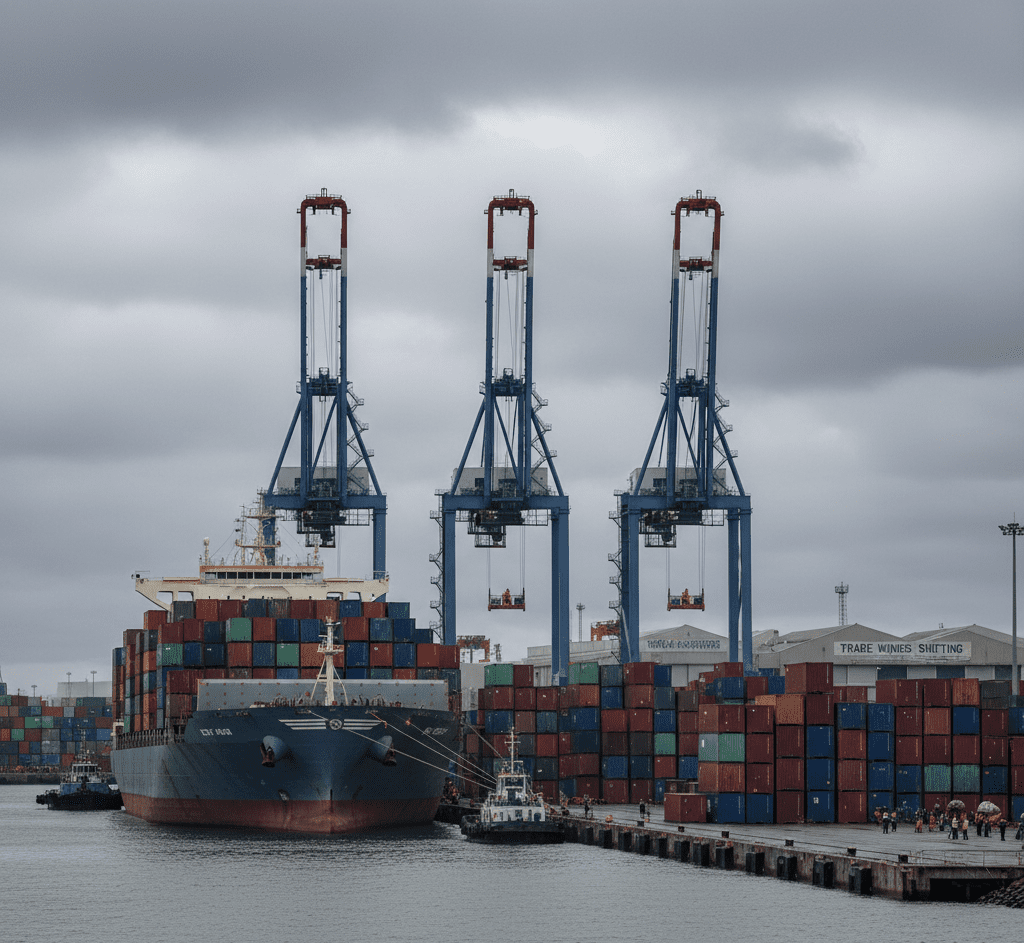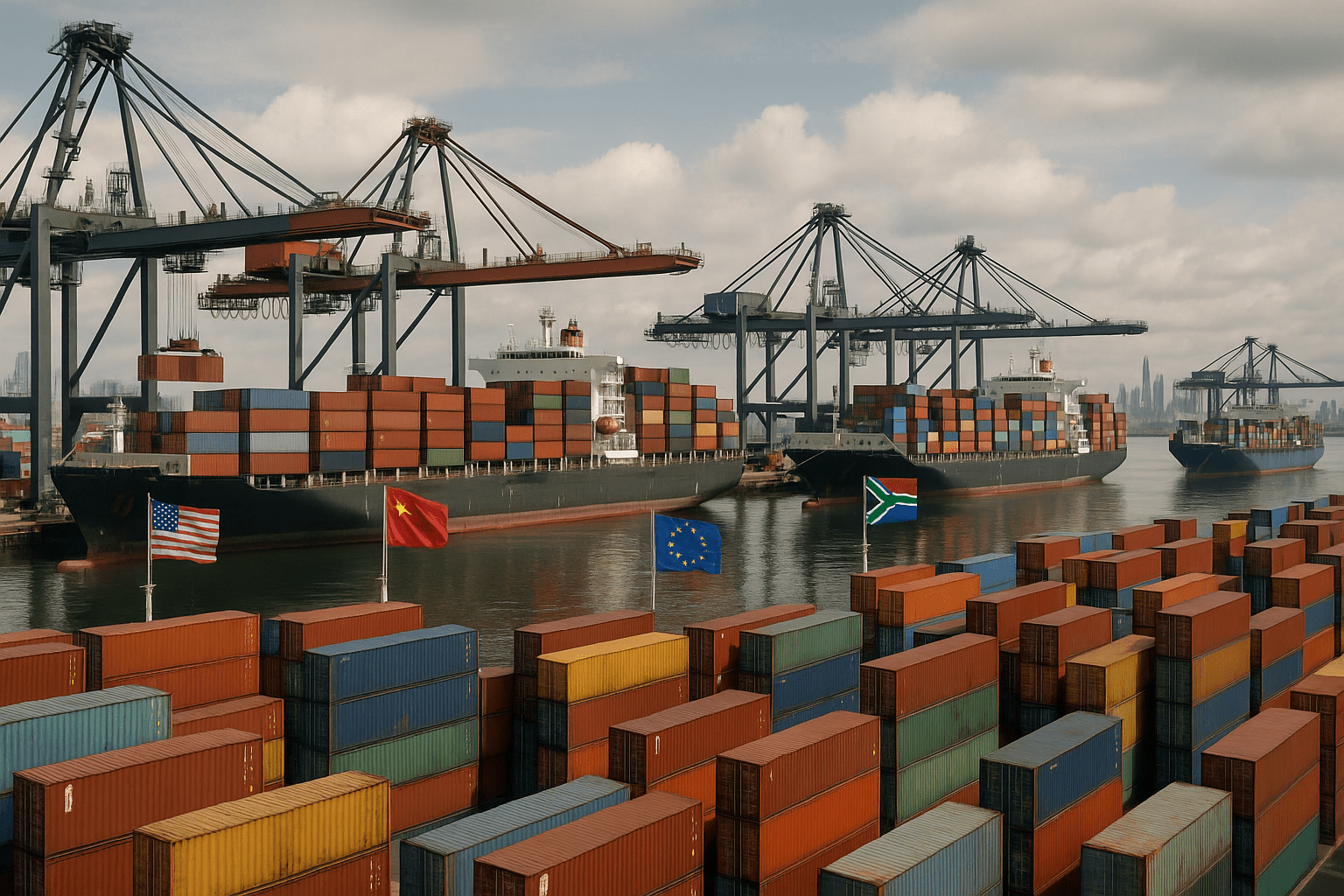How to export South African goods to global

South Africa’s export landscape has never looked more promising. With the African Continental Free Trade Area (AfCFTA) now operational and recent trade agreements worth R90 billion signed with the European Union, SA businesses have unprecedented access to global markets.
The numbers tell an impressive story. South African exports represent 11.1% of the country’s GDP, maintaining consistency from previous years despite global economic uncertainties. More importantly, the government has identified export growth as a key strategy for economic recovery and job creation.
But here’s what makes 2025 different: businesses of all sizes can now tap into these opportunities. You don’t need to be a mining giant or agricultural corporation to succeed internationally. Small and medium enterprises are finding their niche in everything from artisanal foods to innovative tech solutions.
The real question isn’t whether you should export – it’s how quickly you can get started.
Essential Requirements for Exporting from South Africa
Before your first shipment leaves South African shores, you’ll need to navigate some crucial regulatory requirements. Don’t worry – once you understand the system, it becomes straightforward.
SARS Registration: Your Export Foundation
Every South African exporter must register with the South African Revenue Service (SARS). This isn’t just bureaucracy – it’s your gateway to legitimate international trade.
You’ll need to complete registration through the Registration, Licensing, and Accreditation (RLA) system. The process requires your business registration documents, tax clearance certificates, and banking details. SARS has been modernizing this system since 2022, making the process more streamlined than ever before.
Here’s the critical part: you must keep your SARS profile updated. Recent changes require all traders to merge their tax and customs profiles through Legal Entity Registration and complete onboarding on eFiling. Failure to comply can result in code suspension, halting your export activities.
Documentation That Opens Doors
Success in exporting hinges on proper documentation. The Single Administrative Document (SAD) serves as your multi-purpose declaration form for exports, covering everything from customs clearance to transit movements.
You’ll also need commercial invoices, packing lists, certificates of origin, and shipping documents. Depending on your product category, additional certifications might be required – food safety certificates for agricultural products, quality certificates for manufactured goods, or environmental compliance documents for industrial products.
The key is understanding that documentation isn’t just about compliance – it’s about building trust with international buyers who need assurance about product quality and legitimacy.
Your Step-by-Step Export Process
Let’s break down the export process into manageable steps that any South African business can follow.
Step 1: Market Research and Product Validation
Start by identifying markets where your products have genuine demand. Tools like the Observatory of Economic Complexity can show you which countries import products similar to yours and at what volumes.
Consider factors beyond just demand: currency stability, political climate, trade relationships with South Africa, and cultural preferences. The African Continental Free Trade Area offers excellent opportunities for testing international waters with reduced tariffs and familiar business practices.
Step 2: Establish Your Export Infrastructure
Set up dedicated export processes within your business. This includes export pricing strategies that account for shipping, insurance, and international payment terms. Many successful SA exporters price in US dollars or euros to reduce currency risk.
Open foreign currency accounts with your bank to handle international transactions smoothly. South African banks like Standard Bank and FNB offer specialized export financing solutions that can help bridge cash flow gaps during the export cycle.
Step 3: Find and Vet International Partners
Building relationships with reliable international distributors, agents, or direct customers is crucial. Trade shows, both virtual and physical, remain excellent venues for making connections. The Department of Trade, Industry and Competition regularly supports SA businesses at international exhibitions.
Use platforms like Export.gov, trade directories, and LinkedIn to identify potential partners. Always verify credentials and request references before committing to exclusive distribution agreements.
Step 4: Navigate Shipping and Logistics
South Africa’s ports in Durban, Cape Town, and Port Elizabeth connect you to global shipping networks. Choose freight forwarders with proven track records and transparent pricing structures.
Understand Incoterms – these international trade terms define responsibilities between buyer and seller. As a new exporter, starting with EXW (Ex Works) or FOB (Free on Board) terms can limit your risk while you build experience.
Choosing the Right Markets for Your Products
Not all international markets are created equal for South African exporters. Strategic market selection can make the difference between export success and expensive lessons learned.
The African Advantage
The AfCFTA has created a continental market of over 1.3 billion people. Countries like Nigeria, Kenya, Ghana, and Egypt offer growing middle classes with increasing purchasing power. The familiarity of doing business within Africa, combined with preferential trade terms, makes this an excellent starting point for new exporters.
Recent data shows that South African exports of consumer goods, pharmaceuticals, and fresh produce to other African countries have grown significantly since AfCFTA implementation began.
Traditional Markets with New Opportunities
Europe remains a key destination for South African exports, especially after the recent R90 billion trade and investment package. The EU’s focus on sustainable and ethically-sourced products aligns well with South Africa’s capabilities in areas like organic agriculture and responsible mining.
The United States, through programs like AGOA (African Growth and Opportunity Act), offers duty-free access for over 1,800 South African products. This preferential access creates competitive advantages that smart exporters are leveraging.
Emerging Market Potential
Asian markets, particularly India and Southeast Asian countries, present exciting opportunities for South African businesses. These markets often have less saturated competition than traditional Western markets while offering substantial growth potential.
The key is matching your product capabilities with market needs rather than trying to force products into unsuitable markets.
Overcoming Common Export Challenges
Every South African exporter faces similar challenges. Understanding these obstacles upfront helps you prepare solutions rather than react to problems.
Currency Volatility Management
The rand’s volatility can significantly impact export profitability. Successful exporters use forward exchange contracts to lock in favorable rates and price their products to maintain margins even with currency fluctuations.
Consider working with treasury specialists at major banks who can structure currency hedging solutions appropriate for your export volumes and risk tolerance.
Quality Standards and Certifications
International buyers often require certifications that exceed South African standards. ISO certifications, organic certifications, or industry-specific quality marks can be necessary for market access.
While obtaining certifications requires investment, they often become competitive advantages that justify premium pricing and open doors to quality-conscious buyers.
Payment Security Concerns
International payment risks differ significantly from domestic trade. Letters of credit, trade finance, and export credit insurance can protect against non-payment while maintaining competitive payment terms for buyers.
The Export Credit Insurance Corporation of South Africa (ECIC) offers political and commercial risk insurance that can make exporting to challenging markets financially viable.
Maximizing Your Export Success
Successful exporting isn’t just about moving products across borders – it’s about building sustainable international business relationships that generate long-term value.
Building Brand Recognition Internationally
Your South African origin can be a significant advantage in international markets. The “Made in South Africa” brand carries associations with quality, innovation, and ethical business practices. Leverage this positioning in your marketing materials and product packaging.
Develop marketing messages that highlight your South African heritage while addressing specific market needs in target countries.
Continuous Market Development
Start with one or two markets and build deep relationships before expanding further. Understanding local business practices, payment preferences, and cultural nuances takes time but creates sustainable competitive advantages.
Regular market visits, even virtual ones during challenging times, help maintain relationships and identify new opportunities within existing markets.
Technology and Digital Platforms
Modern exporting increasingly depends on digital platforms for marketing, customer service, and logistics management. Invest in systems that can handle international transactions, multi-currency pricing, and cross-border logistics tracking.
E-commerce platforms like Alibaba, Amazon Global, or specialized B2B platforms can provide market access without requiring significant upfront investments in market development.
Ready to Take Your Products Global?
Exporting from South Africa in 2025 offers tremendous opportunities for businesses ready to think beyond domestic markets. With proper preparation, regulatory compliance, and strategic market selection, your products can compete successfully on the global stage.
The foundation is solid – South Africa’s trade infrastructure, favorable exchange rates for international buyers, and growing trade agreements create an environment where exports can thrive. What’s needed now is your commitment to building an export-oriented business that can capitalize on these opportunities.
Start small, focus on compliance, build relationships, and scale gradually. The global market is waiting for what South African businesses can offer.




